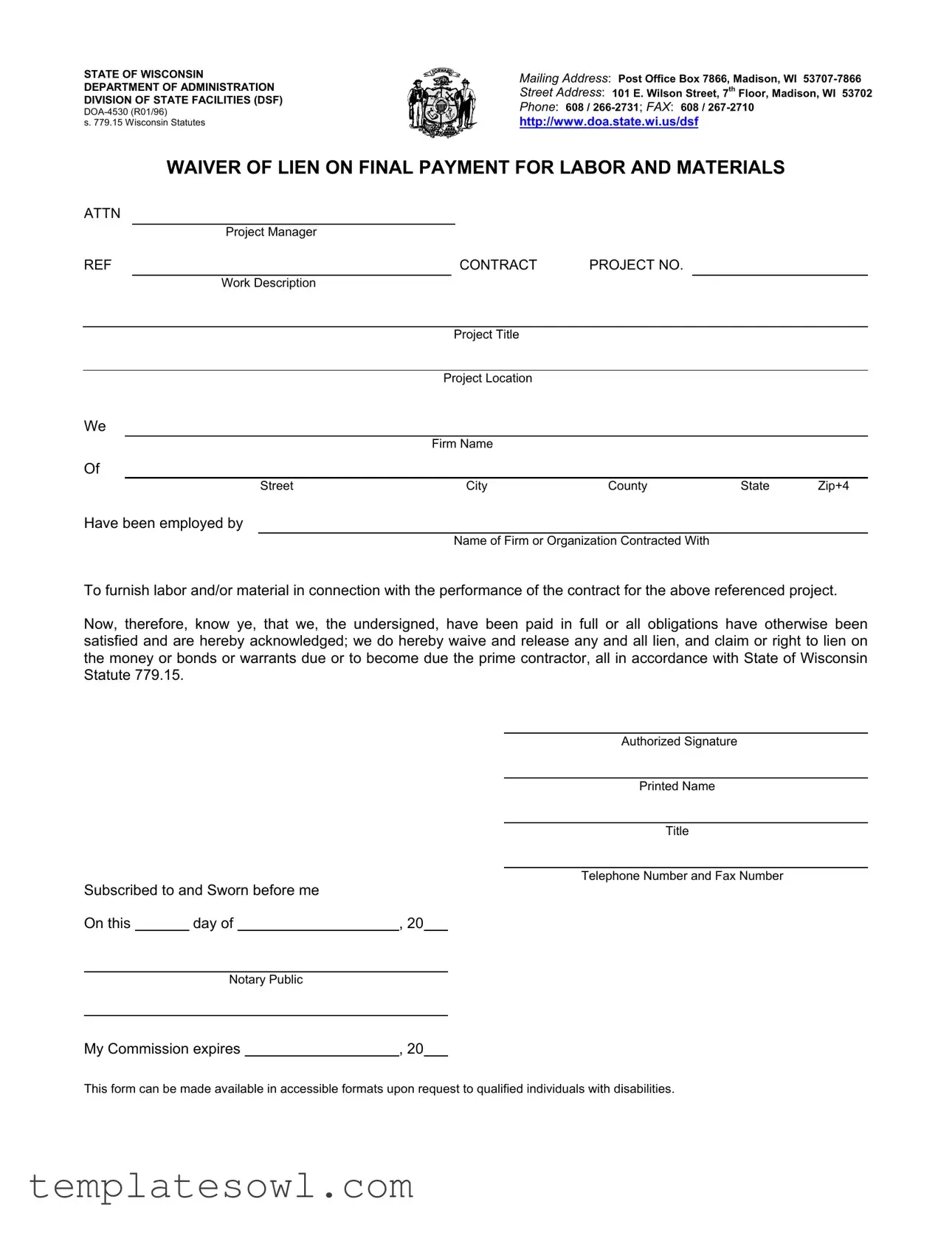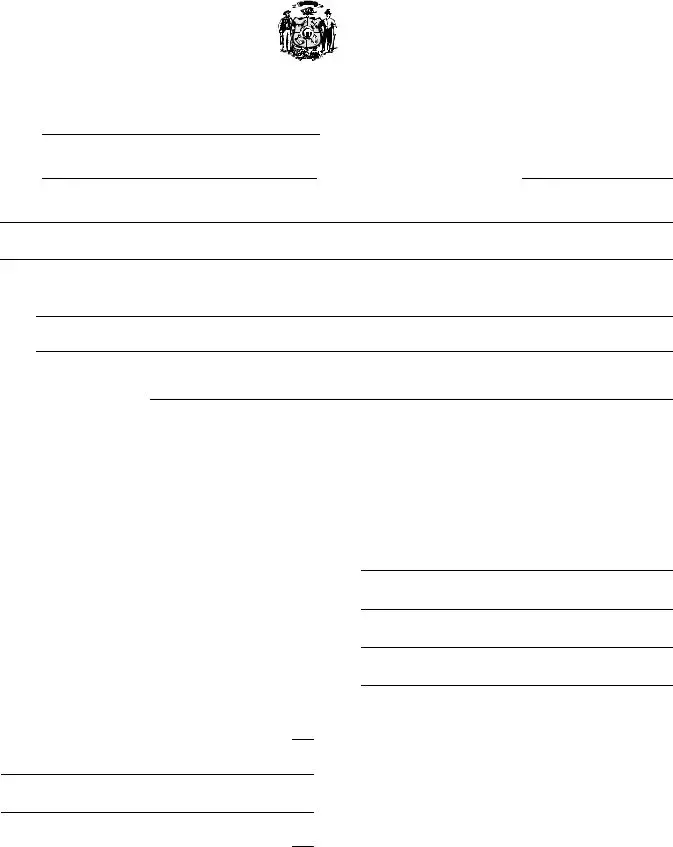What is a Lien Waiver in Wisconsin?
A lien waiver in Wisconsin is a legal document used to relinquish one’s right to claim a lien against a property for unpaid work or materials. By signing a lien waiver, a contractor, subcontractor, or supplier indicates that they have been fully paid or that all obligations have been satisfied, preventing them from filing a claim against the property for that specific work or material.
Why is a Lien Waiver important?
A lien waiver is significant because it provides protection for property owners and contractors. For owners, it assures them that they have cleared any potential claims from subcontractors or suppliers, helping to secure uninterrupted ownership and clear title to the property. For contractors, it confirms receipt of payment, ensuring that they cannot be pursued for outstanding debts related to the project.
What types of Lien Waivers are available in Wisconsin?
In Wisconsin, there are typically two types of lien waivers: conditional and unconditional. A conditional lien waiver is used when payment has been promised but not yet received. This type protects the provider until the payment is fulfilled. An unconditional lien waiver, on the other hand, is executed when payment has been received, letting the contractor release their claims without conditions.
Who is required to use a Lien Waiver?
Generally, any party involved in a construction project in Wisconsin—such as general contractors, subcontractors, suppliers, and service providers—should use a lien waiver when they receive payment. While not always mandated by law, using a lien waiver in construction contracts is considered a best practice in order to clarify payment status and protect all parties involved.
When should a Lien Waiver be executed?
A lien waiver should ideally be executed promptly after the payment has been received and all obligations related to that payment have been satisfied. It is essential that the waiver accurately reflects the amount paid and the specific work or materials covered. This timing helps ensure clarity and avoids disputes that may arise later.
Is a Lien Waiver legally binding?
Yes, a lien waiver is legally binding once it is signed by the authorized representatives of the parties involved. However, the enforceability of a lien waiver can depend on its compliance with specific statutory requirements. Thus, it is vital to ensure that the waiver is complete and properly executed to maintain its legal validity.
Can I revoke a Lien Waiver?
Once a lien waiver has been signed and executed, it generally cannot be revoked. The purpose of the waiver is to assure that the signer has been fully compensated and agrees to release any claims. If circumstances change, such as not receiving the promised payment, the signer may have limited options available to dispute the waiver, depending on how the document was drafted.
How can I obtain a Lien Waiver form in Wisconsin?
The Lien Waiver form, specifically the DOA-4530 form referenced in the state's documents, can typically be obtained through the Wisconsin Department of Administration's Division of State Facilities. Additionally, this form may be accessible in various online formats from authorized legal or construction industry websites. Always ensure that you are using the most current version of the form.
What should I do if I have more questions about Lien Waivers?
If you have further questions or concerns regarding lien waivers in Wisconsin, consider consulting with a legal professional who specializes in construction law. They can provide guidance tailored to your situation and help ensure that your rights and interests are protected throughout the process.

